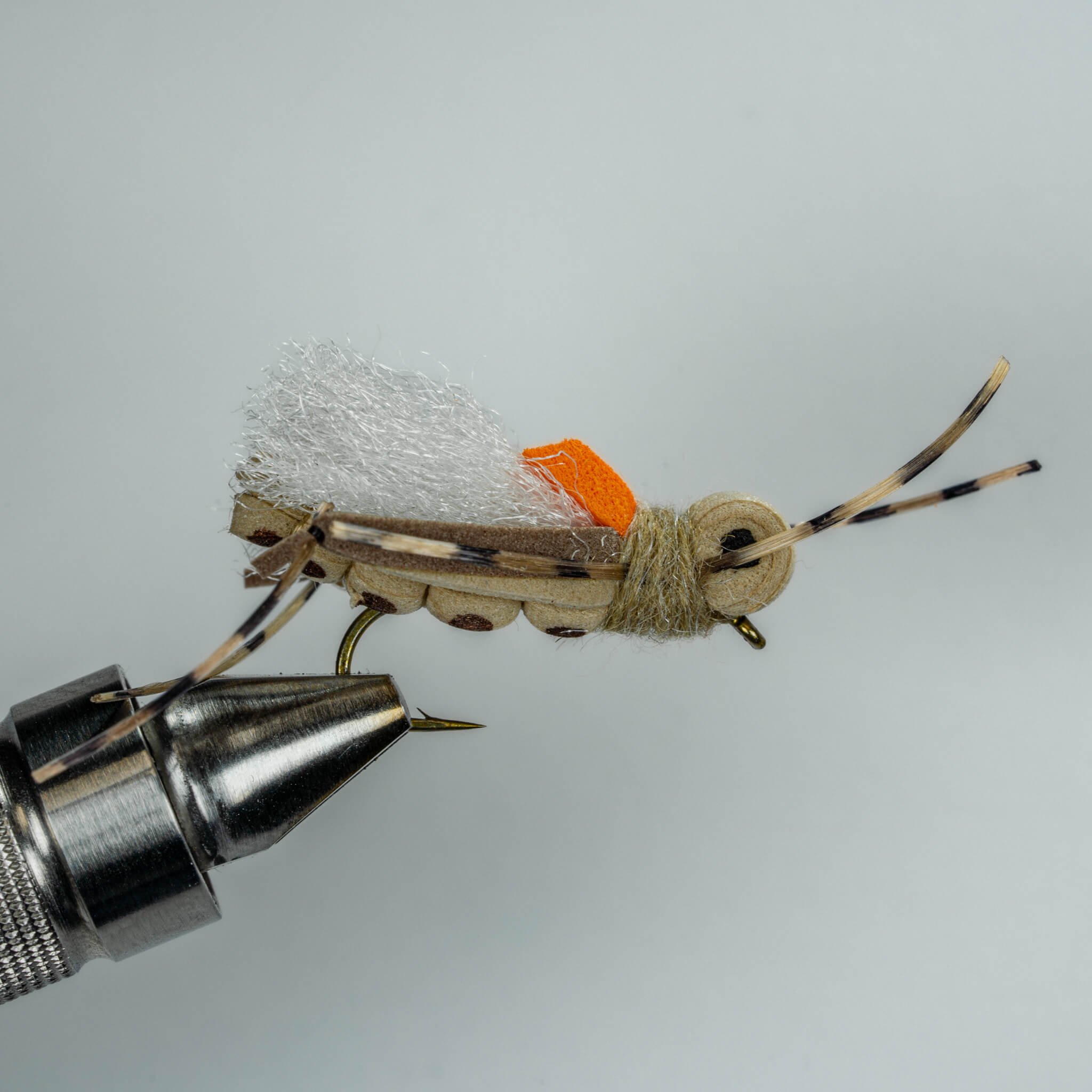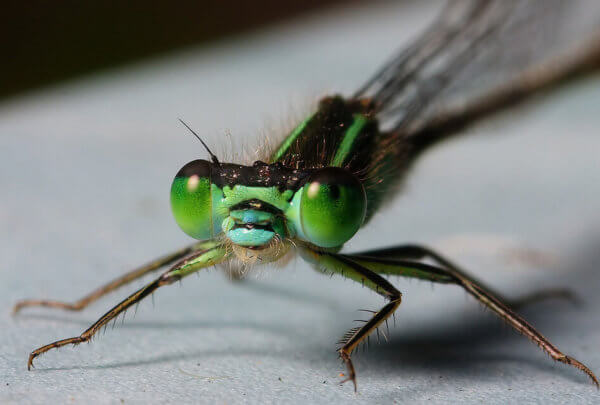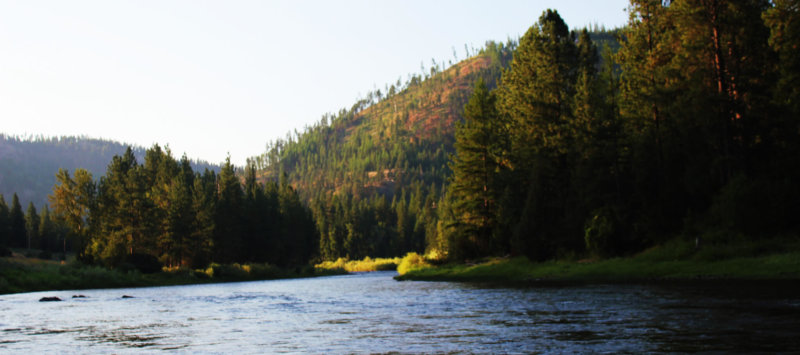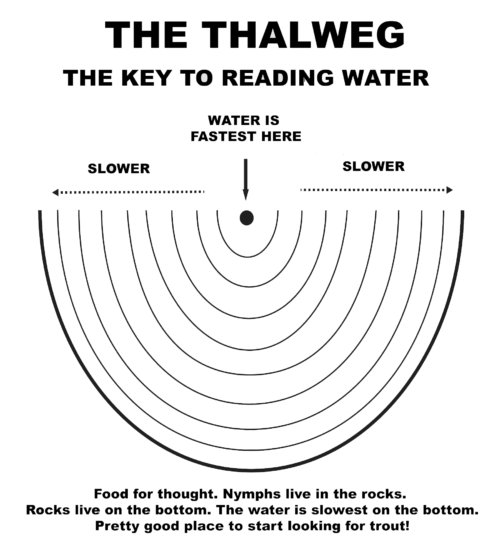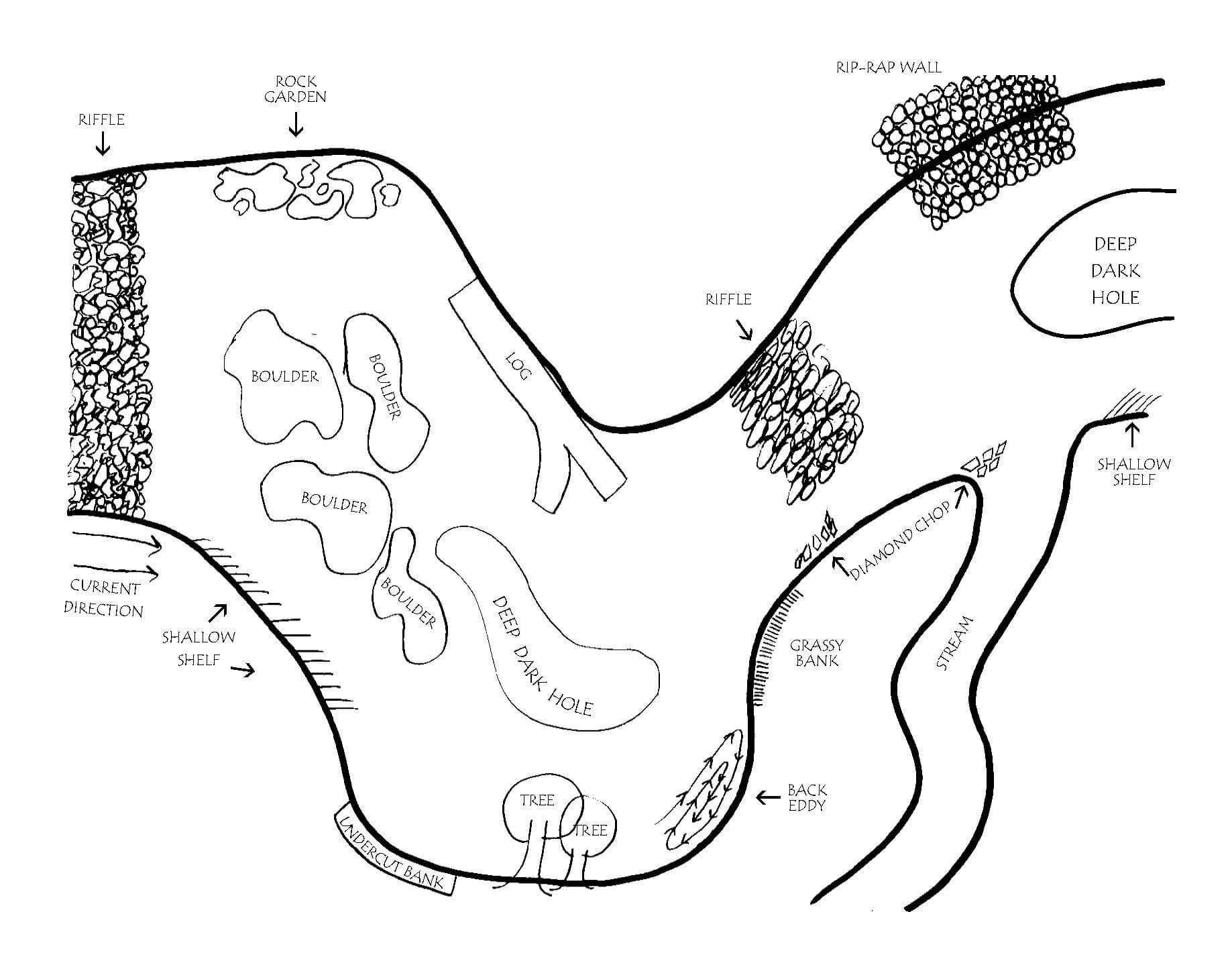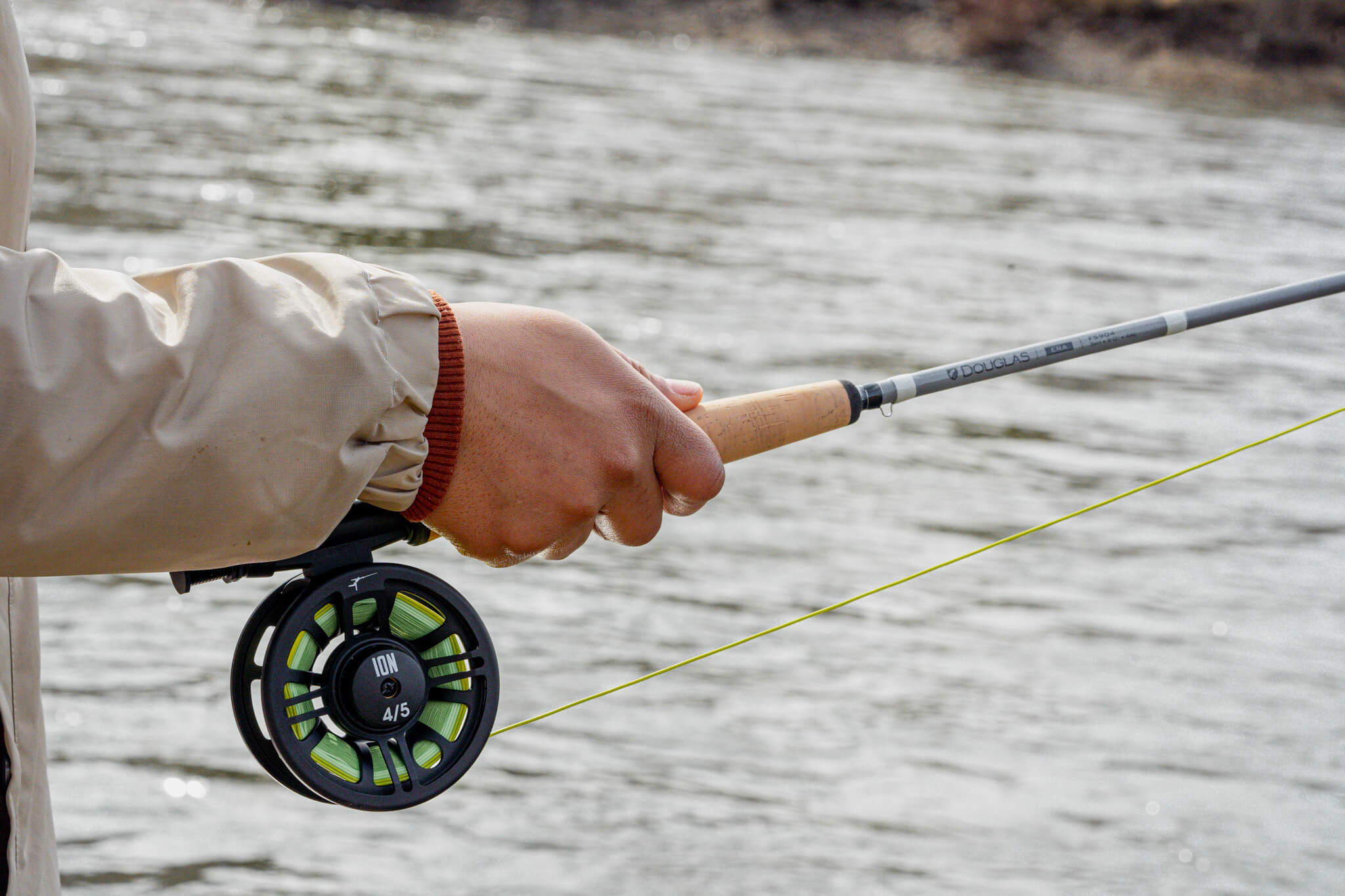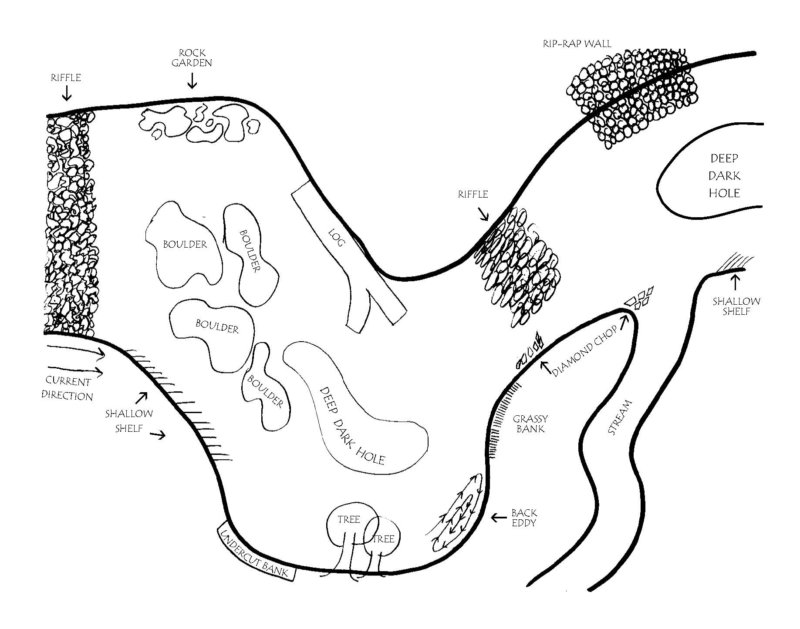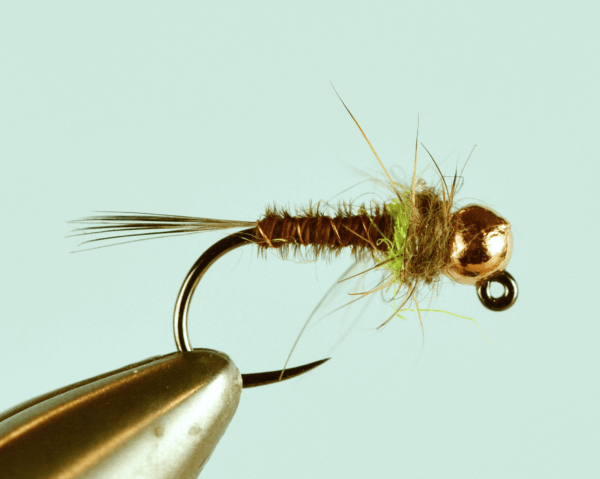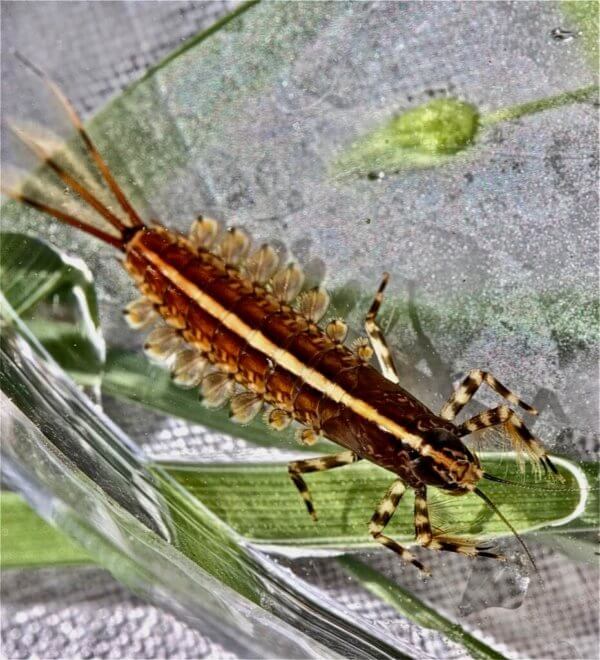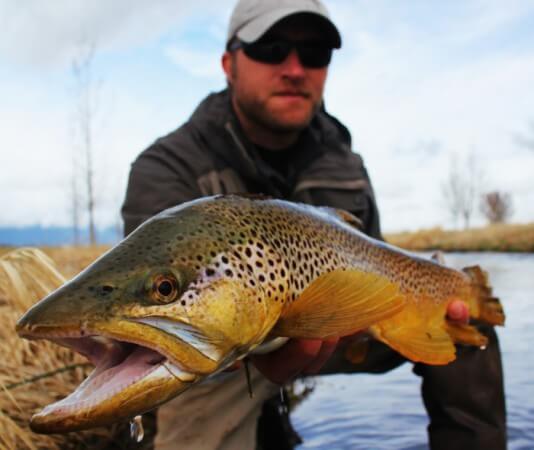Types of fly fishing
Nymphing, throwing streamers and floating dry flies are the three main types of fly fishing. Sure, there are subsets for each one- Euronymphing, matching the hatch, swinging- but they’re all components of these three methods for using a fly. Nymphing is getting a drag-free drift subsurface, dry fly fishing is getting a drag free drift on the surface, and streamer fishing is manipulating a fish imitation subsurface. We’ll use these as our working definitions. Are there variations? Of course, but we’re going to focus on these three types of fly fishing to get you started.
Nymph Fishing
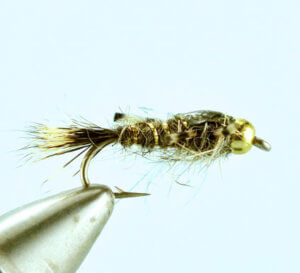
We start with nymphing, as we do with all beginners we teach. There’s a great reason to start there- 90% of the fish eat nymphs 90% of the time. For our purposes, we’ll define nymph as the immature stages of aquatic-based insects like caddis, stoneflies and mayflies, as well as any other aquatic life found on or near the bottom.
Trout feed, all the time. Trout are calorie calculators. It’s this simple- if a trout expends 8 calories to take in 6 calories, it dies. Trout feed where the highest concentration of food combines with minimum energy expenditure. The next concept dovetails with the calorie calculator concept. If you’ve not looked, click here to see a diagram of the thalweg. The thalweg is where the river is moving fastest, and the diagram shows relational river speeds.
As depicted in the diagram, water at the river’s edges moves with less speed. You’ve seen and felt this effect if you’ve ever walked in a river. The edges of the river include the bottom. Nymphs- what the trout feed on- live in the rocks. Rocks-which shelter the nymphs- live on the bottom. The current-which makes trout expend energy- is moving slower on the bottom. Food, some shelter and slower current (equaling less energy expended) are all found on the bottom of a river. Put it together, and the bottom is where the majority of trout are found. For this reason, nymphing is the most important types of fly fishing to master if you want to be consistently successfu
That means the bottom is where your fly should be. It’s that simple. Put your fly where the trout are for more success. If you’re looking for frogs, don’t look on high, dry ground. Sure, you might find one, but most are in low lying areas near water. Play the odds to increase your chance of success.
We started by defining nymphing as a drag free drift under water. Drag is defined as moving counter to the current. The thing all nymphs have in common is the inability to swim. They can crawl on the rocks, but trout aren’t bottom feeders. They only take nymphs that have been separated from the bottom and floating in the current. In short, a trout won’t eat a fly that’s floating counter to the current.
It’s really difficult, if even possible, to see your fly 3 feet deep to know if it’s dragging or not. This is where an indicator is handy. Your average dry fly snob will call it a bobber, and they could be half right. But the serious nympher knows it does exactly what the name says- it indicates. Floating on the surface, the indicator is a visual monitor of the nymph’s action below the surface. If the indicator is dragging, the nymph is dragging. That’s why it’s called an indicator!
A bit of history. Some of the first indicators were made of .25 to 1 inch sections of orange floating fly line with the core removed. Slide them on the leader, tie a blood knot directly below it (Why a blood knot? The surgeon’s knot was unknown at that time). Depending on depth, you might use 2 or more indicators on your leader, spaced 18-24 inches apart. You watched the indicator closest to the fly until it disappeared into the depths, then watched the next one. When it stopped, or jerked sideways, that’s when you set the hook.
At the strike, the indicator is functioning as a bobber. You react to movement counter to the norm. Today’s indicators are very bobber like- often spherical in shape and sometimes hollow. Like a classic bobber, the modern indicator helps control the depth of a nymph, as well as identify drag.
Depth control can be good and bad for this type of fly fishing. With old school indicators and a good drift, at some point the fly got to the bottom. Where the fish are! Nothing except drag impeded sink rate (more on that later), so a good drift always ended up with the hook ticking something. Sometimes a fish, sometimes the bottom, but the hook made contact somewhere.
Today’s indicators float very well, and don’t allow your nymph to sink below a certain depth with this type of fly fishing. The rule of thumb for indicator attachment is set it at 1.5 times the depth of the water. If you’re fishing in 3 feet of water, attach the indicator 4.5 feet from the nymph. 4 feet of water- 6 feet from the nymph. The nymph doesn’t drop straight down from the indicator, it comes off at an angle. The extra length allows the nymph to reach the bottom.
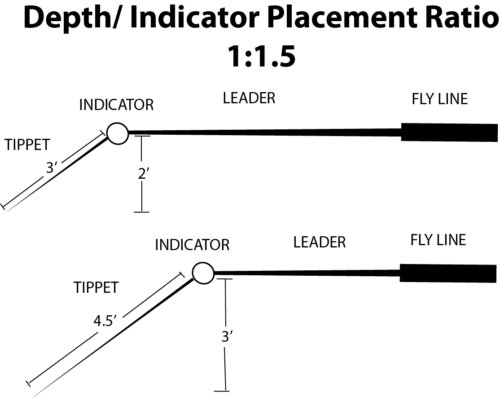
Maybe. When we say the water is 3 feet deep, it’s not exact! The river bottom isn’t a sidewalk. There are shallow spots and deep holes everywhere you look. Shallow isn’t a problem- the nymph gets to the bottom. But if you’re not paying attention, it’s easy to run your nymph in water deeper than you’re rigged for, and the nymph never gets to the bottom.
Here’s where it gets a bit tricky. We’ve said you want your nymph on the bottom. Not quite true. You want your nymph just above the bottom. Unlike the natural, your fly has a hook, and if it’s ON the bottom, it snags the bottom. So best to be just above. Which is easier said than done.
The Mechanics of Nymph Fishing
Find a seam in the river, 2-4 feet deep. Not too fast and not too slow. You aren’t in the seam, you’re beside the seam. Don’t walk where the fish are! Rig your indicator at the proper spot for depth, and cast upstream. Mend the line so a small loop of line is upstream of the indicator. That’s effective for 90% of nymphing. As the fly floats downstream, manipulate the rod (often by lifting it or throwing small mends) to keep the indicator drag free. When the indicator is drag free, the fly is sinking. Watch for any erratic movement by the indicator, and set the hook when it twitches, bumps, jostles or any odd movement. If there’s no fish on the end, do it again. Same deal, cast, mend, watch. Once you’ve covered the 10-12 feet of water, take 3 steps downstream and repeat the process.
How do you find a seam? Remember this- Foam is Home. Wherever you see a lot of bubbles on the surface, you know a lot currents have met in that area. Currents work as the conveyor belt of food, and the more conveyor belts dumping into an area, or seam, the better. Bubbles on the surface are visual indicators to where the currents are converging. Foam is home is important to remember with all types of fly fishing, but especially nymphing.
Bubbles do another thing as well. Cast your indicator and mend it. Find a bubble close to the indicator, and watch both. The moment there is ANY change in relationship between the bubble and your indicator, you have drag. The bubble is free floating- unattached. Your rig is attached, and subject to drag. The bubble is NEVER dragging- you are.
Experienced indicator fishermen often attach the indicator 6-7 feet from the fly, regardless of depth. This way, the nymph contacts the bottom at some point, just as the old school indicators allowed. Experienced nymphers are very quick on the hook set! It saves them a lot of flies. The moment the indicator moves counter to the current, set the hook. If you wait too long, the current pulling against the indicator will set the hook in the bottom. Lost fly. If you wait too long, the trout that just ate your fly will spit it out, feeling the pull of the leader and the rigid fly body. Lost fish.
Hook sets are free! When the indicator moves, set the hook!
Nymphing is the most difficult types of fly fishing, but also the most productive. It’s also easier in some ways, and we’re going back to the calorie calculator. Trout go where the food is. They’re looking for maximum food concentration in a minimum of space.
When the ‘hatch’ is on, the densest insect concentration is found at the top. They are on or just below the surface, which means the food is found in less than 2mm of the water column. Dense population in the minimum space. The concentration of insects concentrates the trout.
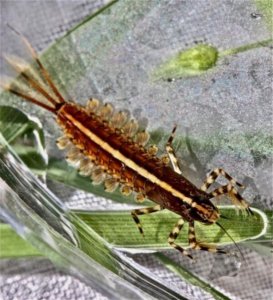
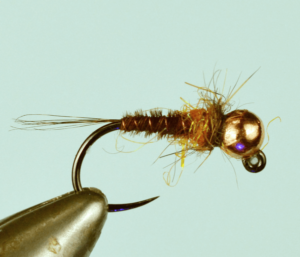
The difficulty with hatches is they are very insect specific. The trout are up and eating, but only eating that specific insect. If the Pale Morning Duns are hatching, you need a PMD to “match the hatch.” A Tan Elk Hair Caddis or Rastaman Golden is not going to get eaten, because it’s not the food form the trout‘s looking for. When fishing to rising fish in a hatch situation, you need to have the correct fly to imitate what’s hatching now.
This isn’t true underwater. All hatches begin their lives on the bottom. Caddis, mayflies and stoneflies start as nymphs in the rocks. Trout feeding on the bottom aren’t always focused on a specific insect- they’re only focused on eating. Yes, there are times, often right before a hatch, when specific nymphs are more active, and trout focus on them. But most of the time, trout eat what floats by when near the bottom.
The trout are less rigid in their feeding near the bottom, so you can be less rigid in your fly choice when nymphing.
Nymphs become separated from the bottom in many ways. Sometimes as they crawl on top of the submerged rocks a current will pick them up and carry them downstream. Currents will also move smaller rocks, dislodging all the nymphs underneath. Why does this happen? So many reasons. A deer crossing the river will dislodge rocks. A log falling in will drastically move the current. Rising and falling water levels also change the hydraulics of current. It’s a constant dance underneath the water to stay safe and protected.
This is happening to every nymph at all times. In 5 minutes, a trout may see stonefly nymphs, mayfly nymphs and caddis larva all float by. Because there’s not a predominance of one insect, trout are willing to eat most anything going past their nose. This makes nymph fly choice relatively simple.
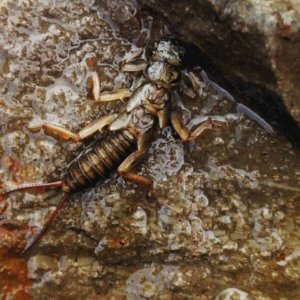

All you need to know is what insects are found in your home waters. If you live in Montana, you get a lot of the big three. Some east coast rivers are almost devoid of stoneflies, so a stonefly nymph will not be as effective. If you are a tailwater angler (tailwaters are defined as rivers with a bottom release dam) you usually find a preponderance of scuds and sowbugs. Use those. In Montana’s freestone rivers, these flies aren’t effective. In Montana’s tailwaters, if you don’t have scuds and sowbugs, you might be out of business. Know the insects you have locally. This will help you master all types of fly fishing.
Lots of ways to do this. You can go to the water and lift a few rocks. This is never a bad idea! It makes things so simple. If you see a lot of brown bugs 9mm long, tie on a brown nymph 9mm long. Do you need to know its latin name to fish it? No. You just need to be close in your imitation. To paraphrase John Geirach, knowing the latin name of bugs just lets you complain about the fishing in a dead language.
Of course, if you do know the latin name, then you’re ahead of the game. Not because you know the name, but because you’ve spent some time finding out about the insect, range and life cycle. You studied. Knowledge is power in all types of fly fishing.
Another way to learn about local insects is stop by your local fly shop. They are up on things, and know what’s going on. It might be better to stop by and get a few 9mm brown nymphs than trust you have them once at the water. We say this all the time, but it bears repeating. No fly shop will intentionally steer you wrong. We, and they, want you to be successful and come back! Fly shops do their utmost to get you the correct bugs and best information, because return business builds a successful business. Not gonna lie, it makes us feel good when someone comes back and tells us, “Your advice worked.”
When you’re standing at the river’s edge getting ready to run a nymph, it’s just as important to locate prime water as it is to choose your bug. Click here to find some useful information on reading water. Once you decide where to cast, attach your indicator and then tie your fly on. In that order. Some indicators must be attached before the fly is tied on. Not true for all, but indicator then fly is a good habit to get into. We’re going to assume you’ve got the right bugs, so you’re ready to go.
Now what?
Cast! Send your rig out there and start fishing! Cast your rig upstream from the trout’s lie, allowing the nymph to sink. Depending on water speed and nymph weight, adjust your cast to allow proper depth for the nymph. Watch the indicator. Make sure there’s no drag. Strike when the indicator moves in a funny way. If the indicator dodges, ducks, dips, dives or dodges, set the hook!
No fish?
Cast again. Same place.
Here’s the thing. We said cast in the same place, but it usually isn’t in the same place. Each cast is different, behaving in a different way. The next cast is longer or shorter, closer to the bank or farther than the last cast. Sometimes the first cast is perfect, and the drift is great. Sometimes, the second cast is dubious, and the drift is poor. Drag negatively affects sink rate. Drag is tension on the line- that tension inhibits sink rate. Adjust the second cast by mending, and the fly sinks faster. But it’s NOT in the same place as the first cast was! Many times, a different cast in the “same” place results in your nymph floating through a different depth in the water column. And maybe a different result with the trout.
A quick aside. We CANNOT overstate the importance of mending. Click here to go to a section on mending. Mending, when done properly, REMOVES drag from the indicator, and therefore the nymph. Hopefully you’re understanding the importance of removing drag. You can get away with a bad cast, if you mend it properly. At some point, mending becomes more important to fishing than your cast and that goes for most types of fly fishing. We know a lot of anglers who can’t cast their way out of a wet paper sack, but catch a lot a lot of fish. Because they mend, and the fly floats naturally. We’re going to leave you with the fly fishing guides three best words of advice. Mend. Mend!! MEND!!!!
Now you’re saying, trout are so spooky! Won’t they run away as soon as there’s a bad cast? Not necessarily. When trout are near the bottom, they feel fairly safe- much safer than near the surface. It takes a lot more to annoy a trout in its home. You’ve got a lot more leeway when you’re under the water than on the surface.
When nymphing, you might not be moving as far as other types of fly fishing like streamer fishing or dry fly fishing. Your presentation varies with each cast, so you’re covering different fish with each cast. In their homes on the bottom, trout are no where near as spooky. Make sure you work the prime water really well before moving to greener pastures.
When do you move to greener pastures? Isn’t that the question!! So many different answers, but this is the one that comes to mind first. Move when you’ve lost confidence in the fishing in that spot.
Confidence is critical when fly fishing. Henry Ford was correct when he stated, “Whether you think you can or think you can’t, you’re probably right.” When you first get to a spot, you’re on it. You’re fishing hard, intensely focused and on point. Casts are crisp, mends are good. But after a while, doubt creeps in. You start to wonder about the next boulder, or what’s around the bend. That’s when you start to lose focus on the here and now. Your cast gets a bit sloppier, your mends get less frequent and the drag a bit more noticeable. In short, you’re fishing badly.
Now’s the time to move your feet. The walk will do you good. Re-focus. Analyze your lack of success, and try to remedy it. Should you be deeper in the water column? Is it time for a new fly? Add some weight to the leader? We know it’s difficult to assess in the midst of fishing. You’re focused, not contemplating a lack of success. As you walk to a new spot, even if it’s 7 feet away, use your brain. Adjust somethings. Take 5 and think. Remember Einstein’s definition of insanity- Doing the same thing over and over again, and expecting a different result. Do something different.
What’s the worst that can happen. You don’t catch fish? You’re already doing that!
When you think about changing flies, it’s often good to change flies. If the 9mm bug isn’t working, think about moving to a 6mm bug or a 12mm bug. We say it’s easy to recognize a fly fishing beginner’s fly box. 12 flies, all the same size, but in different colors. Think about this. If you’re hunting antelope, and you see an animal crest the bluff, what’s the first thing you do. Check size. Antelope are small- moose are big, elk fall in between. As a predator, size is the first characteristic taken into account. It’s the same with trout. Better to have 12 flies in 4 different sizes, with less color variation. Trout might make a mistake if your fly is the wrong color, but rarely if it’s the wrong size.
Bearing that in mind, if there are no natural insects in the watershed that are 12mm long, it’s not a crafty move to go there. You still need to be within the realm of possibility on your home waters. In our home waters of Montana, we have insects ranging from 5mm to 54mm long. That’s a big range! And strangely enough, it’s the bugs on the edge of the size range that create the most difficulty. If a dark olive 12mm insect flies by, you’re probably going to have another 12mm fly in your box. Might not be perfect, but it will be close. When that 54mm bug flies by, you just look in your box and say oh well! Got nothing!
There is a strategy to buying flies for all types of fly fishing, including nymphs. As you begin fly fishing, you often allow the shop person to pull your flies. When you start choosing your own, it’s good to have a plan. We refer to fly selections as deep or wide. As an example, a deep selection of Solitude Jig Pheasant Tail Nymphs would be 12 in size 14. A wide selection of Solitude Jig Pheasant Tail Nymphs would be 3 each in sizes 12, 14, 16 and 18. What’s the perfect selection? Wide and deep, but you either need to tie or have deep pockets for that. For the money, shallow and wide covers more bases.
Here’s another way to look at it. As a novice, you’re not always sure what fly you need. We feel it’s better to find the fly that works, even if you’re short for that day. But once you’ve dialed it in, you can get more. Shallow and wide helps you find what fly to go deep in.
Experienced anglers have favorite flies for all types of fly fishing. Time-tested, experience has bred confidence. As a novice, you don’t yet have experience to fall back on. It will come. Here’s another lesson, hard learned. When you get started, trout are few and far between. You catch a fish on a fly, and think, now I know what works. You fall in love with that fly, and never change. Not always the best strategy.
Here’s why. You last fished in October, and had good luck with a grasshopper. You head out in April, and think, the grasshopper really worked last time. I’m going to try it again. However, with no natural grasshoppers, the fish aren’t looking for them and it will be ineffective. The cyclical nature of insects means you must react to the same cycle, using imitations familiar to trout at the time your fishing.
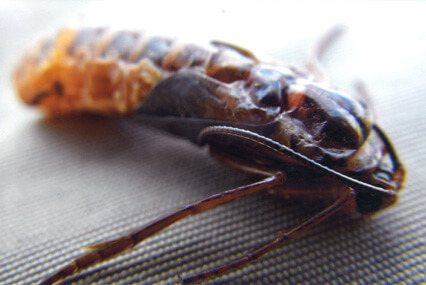
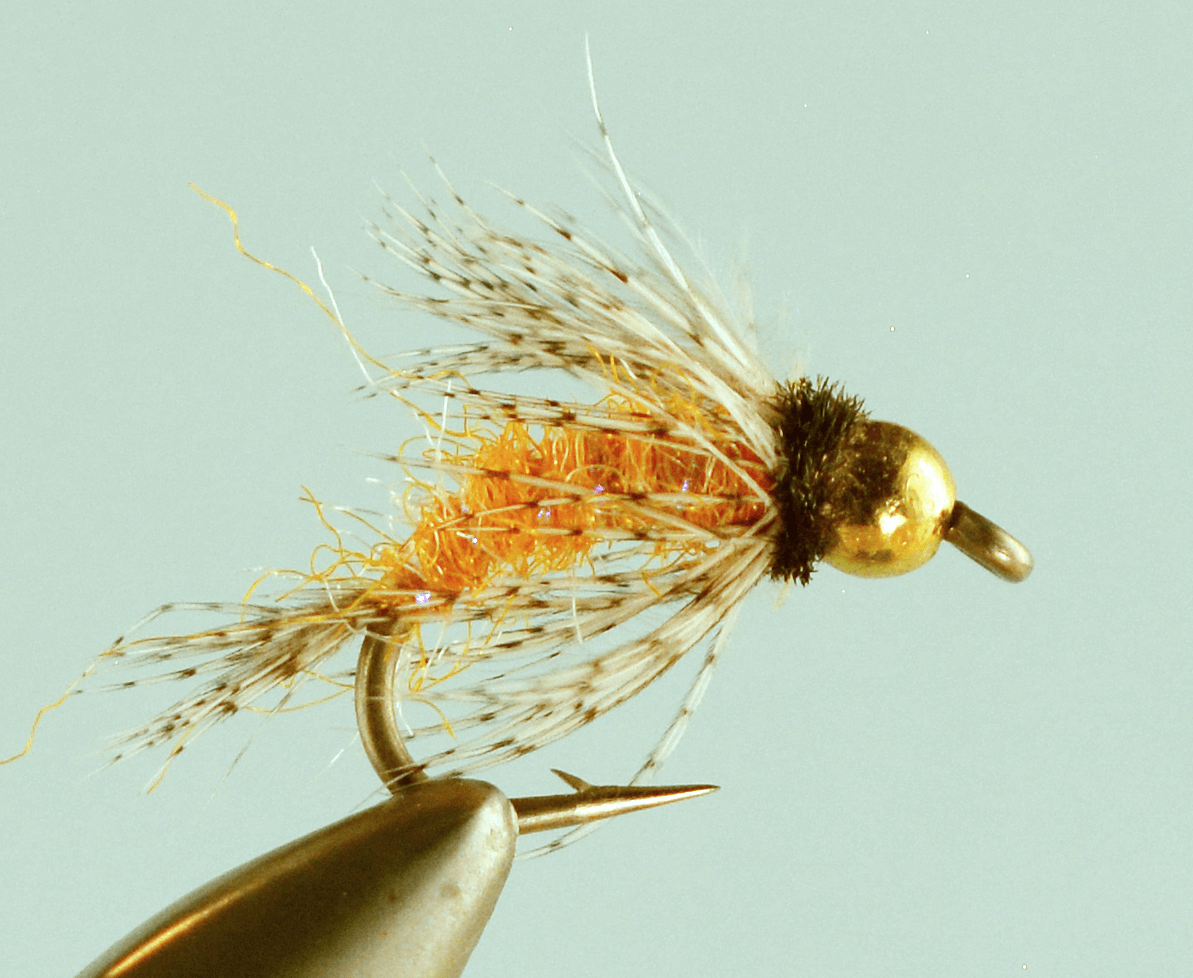
We started the nymphing section by saying trout are feeding all the time. If you’re not catching fish all the time (and no one does- that statement is for dramatic effect!) the trout are telling you something. Wrong spot. Wrong fly. Wrong depth. Wrong drift. There’s a banana in the boat. Something is stopping the trout from following their instincts and eating. It’s your job to figure it out. It’s why we keep coming back to fly fishing, first for the problems and then for the solution!
There is a faster way to ascertain what the trout are eating, and that’s to use two nymphs when fishing. Called a double nymph rig, it consists of tying two flies to the end of your line. Click here to see how to rig two flies. With two nymphs, you find out preferred size and color a whole lot faster. You also have a chance to double fly loss, but that’s always part of the game. For the record, Montana FWP regs state you may have no more than two flies on one line. Other states may be different, so before you decide that if two are good, four are better, read the regs regardless of the different types of fly fishing you will be doing.
Dry Fly Fishing
More ink has been expended on dry fly fishing than on all other types of fly fishing combined. To many, it’s the culmination of the art, and anglers will travel around the world to find the hatch. For the purposes here, we define hatch as a preponderance of insects found at the surface, irregardless of how they got there. Click here for information on life cycles of insects to more fully understand that statement.
Unlike other types of fly fishing, dry fly fishing is often hatch oriented, it’s not the only time to fish a dry fly. Terrestrials- insects that originate on land- like grasshoppers, ants and beetles find their way to the water where they are eaten. Some anglers prospect with a dry fly, when no fish are rising, hoping to coax a trout up from the bottom.
It’s the visual aspect of dry fly fishing that is so appealing compared to other types of fly fishing. You can see your fly floating along, and when a trout takes, you know! It’s how fly fishing originated. Anglers saw their next meal eating a very identifiable food source. The ring of the fish’s rise told the angler where it was! When the hunter knows where the prey is, that makes capture a lot easier. A rising fish tells you where it is and that it’s hungry. The rest is up to you.
Dry fly fishing is easier than other types of fly fishing because you can see the fly. Nymphing is a 3-dimensional technique- dry fly fishing is on 2. Your dry fly needs to be drag free, just as the nymph and indicator, but when the fish takes, you see it. That makes knowing when to set the hook a lot simpler.
The trout are trickier.
Trout don’t like the surface. Too many bad things happen there. Eagles. Bears. Raccoons. Dry fly fisherman. The closer a trout is to the top, the more exposed it is. They are instinctually wired to flee from the surface.
Why are they there? It’s the same answer every time. Concentration of food and/or risk/reward. Rising fish can broadly be placed in two categories- opportunistic and focused. Opportunistic trout are found somewhere in the water column, and they are on the prowl for food. They are looking to eat, and willing to take what goes by. . . to a point. They’re working the entire water column, bottom to top, searching for calories.
The Mechanics of Opportunistic Dry Fly Fishing
By reading the water, find a spot you think a trout may be lurking. Choose your fly and tie it to a balanced leader. Most dry fly fishing is done in an upstream fashion, so cast your fly upstream, beyond where you think the trout is. The fly needs to float into its window. Maintain a drag free drift, and hope the trout eats. If you’ve gotten a few good drifts and nothing has risen, move along to the next spot.
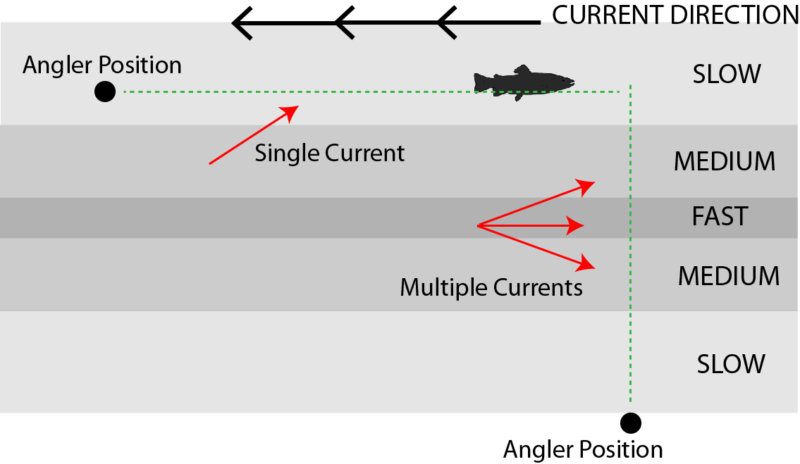
Upstream fashion is so vague! Here’s a better description. If you are directly below the trout’s lie, and cast directly upstream, you have very few currents to contend with. A drag free drift is relatively easy. If you are directly opposite the lie, and casting across the river, you are contending with a lot of different currents that affect the drift of the fly. Drag free drift is very tricky to get when casting across the current. Going from directly downstream to directly opposite the lie, the drift gets more difficult the more currents you cross. It’s as simple as that.
If a recognizable food form goes over their head, they may decide to come up and eat it. What’s a recognizable food form? Could be a mayfly, a caddis, stonefly, grasshopper, beetle, ant, Royal Wulff or any other floating morsel that looks like food to a trout. This trout will leave the safety of its lie and come to the surface to eat.
Again, trout aren’t happy to be near the surface. But when food is coming over them, a decision- as much as any animal with an IQ of 4 can decide- is made. Is the risk worth the reward. If the reward is a grasshopper or a stonefly, both of which are of similar size, it’s obvious that a lot of calories might be worth a trip into danger.
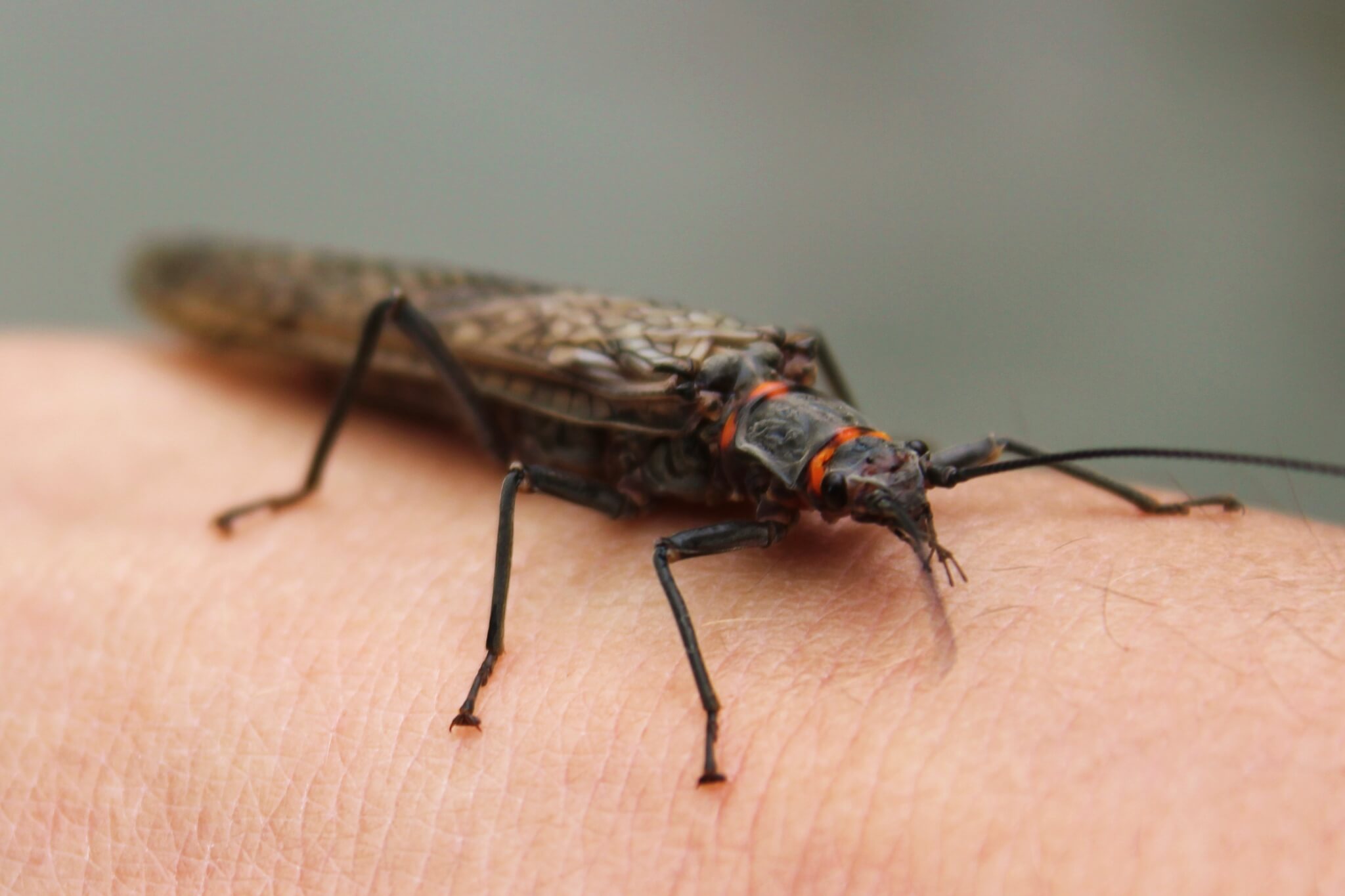
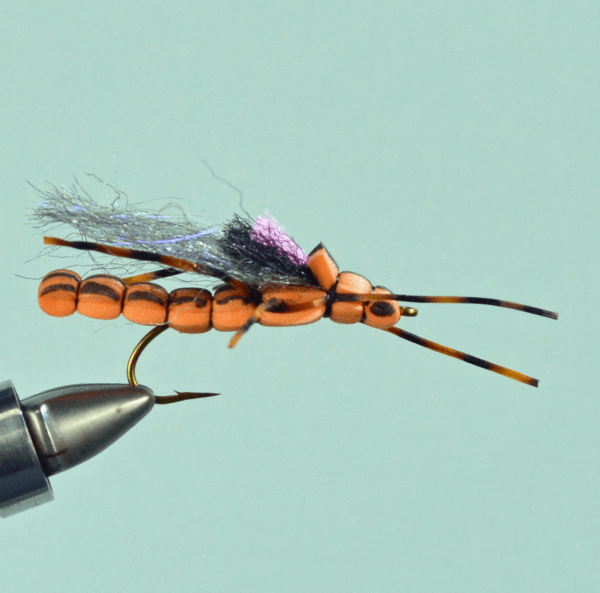
Smaller flies work for different reasons. When a fish finds a lie, it has a familiarity with the water. If a lot of ants or beetles are present, they may be thought of as reliable, and worth coming to the surface for. The same may be said for caddis and mayflies.
It all gets a little anthropomorphic, which means we are giving human characteristics to trout. We have no clue what actually goes on in a trout’s brain- we’re not Dr. Doolittle and we don’t have his email address. If you ARE Dr. Doolittle, or have his email address, please get in touch with us! But using anthropomorphic analogies helps us understand the trout’s behavior. Sort of.
When a bug is on the surface, it’s in a very finite spot in the water column. It’s easy to eat, dependable as to distance traveled, and often helpless. The surface can be a reliable source of food to a hungry trout, and they are all hungry. Insects on top are also very visible to trout. Remember that. Surface insects are very visible to the trout- so are you. Trout are skittish at the surface, and will bolt at the least sign of trouble. You’re trouble, so don’t let them know you’re there.
When searching for opportunistic trout, the angler has a few different problems confronting them. The first- is the trout actually going to come to the surface? They’re not showing themselves willing, so you need the confidence that the fly you’ve chosen is going to work.
The second problem, as always, is drag. It bears repeating trout won’t eat a dry fly dragging across the surface. Or one going faster than the current, or one going slower than the current. Drag is a 360 degree phenomenon. You see drag and mend as you’ve done with a modern indicator. The big mend drags your dry fly 3 feet under the surface, and it doesn’t float back up.
Mending a dry fly isn’t like mending an indicator. It’s a subtler, less invasive mend. Easier said than done. Again, click here to learn about mending and the aerial casts that aid mending. Smaller mends will often bring better results with a dry fly. Attention to where you’re standing in relation to the current is also more important. Often, stepping 3 feet up or downstream will make all the difference in the world. Removing a current seam or jutting rock from the drift can be the difference between fish and no fish. Pay attention.
Prospecting with the dry fly takes a lot of confidence compared to other types of fly fishing, patience and commitment. You’re working water that clearly holds fish, and you’re deliberately NOT going after them in the most effective way. You’ve exchanged the thrill of the catch with the thrill of the rise.
This is where a little history of fly fishing is helpful. From the 1890’s through the 1920’s, the debate raged on dry fly v. nymph. It was debated in fishing clubs, angling magazines and on the river. With the passion that can only be found in hobbyists (None of the debaters were fishing for dinner- it was all fun to them), the discussion played out. The efficacy of the nymph. The purity of the dry fly. Yadda yadda yadda. And the dry fly guys won. With a lot more words and glitz, they basically said, we’re superior because we only ply the surface. Our motives are purer. In short, they were dry fly snobs and could care less about the other types of fly fishing.
I clearly remember listening to a conversation as a young kid my grandfather and his cronies. One remarked that so and so had limited out for the day by 8:30am! Much praise was about to follow when another said, “Nymphing.” Praise immediately went to scorn- any FOOL could do that with a nymph. Of course, I’m not so sure my grandfather, in the early 70’s with no indicators, actually COULD have done that, but they all thought they could. That was the attitude towards nymphing and other types of fly fishing for a long time. To this day, there are rivers in England where you may only cast upstream to rising fish. Yes, some fly fishermen are like that.
When you arrive at a river and nothing is happening at the surface, yet still tie on a dry, you’re forcing the fish to eat your way. You’re saying, I’m fishing a dry fly, and if they eat they eat. It’s not the smartest way to go about catching fish.
Which for some anglers isn’t the point. Some anglers just like to be on the water, taking the rod for a walk, casting here or there. Others want a fish on the end of their line all the time, and fish smart all the time. Fly fishing is such a wide river of experiences, with so many side channels to explore. Do what you want to do on the water, and don’t be influenced by another’s idea of what types of fly fishing is best. Happy Place!
The other category of rising trout is a focused trout. A focused, rising trout is coming up steadily, in the same place. There is a food form on the surface they’ve identified, and they’re near the surface to take advantage of the concentration of food.
When trout are rising steadily to a hatch, they’re very focused on one specific food form. It’s easiest to understand the intense focus of a surface feeding trout in this way. Trout have an IQ of four. The river is acting as a conveyor belt, and bringing food to the feeding fish.
Now imagine a person with an IQ of four sitting next to a conveyor belt watching food go by. All of a sudden, a strawberry goes by, and then another. The person eats a strawberry and its good. Another goes by, and it gets eaten. Now the 4 IQ is totally focused on the strawberries going by, eating them exclusively. A random tomato goes by, a cherry tomato, a raspberry, a cherry, an apple, a maraschino cherry, a steak dinner with French fries, veggie, salad and desert. They are all allowed to pass. Most are close to a strawberry, but not a strawberry. Others offer 200 times more calories, which would seem to trump all via the calorie calculator model. But 4 IQ doesn’t have a lot of room for thought. They focus on the predominate food form, and that’s that.
Lets extend the metaphor a bit more. Some of the strawberries have a green top- not fully ripened. Others are fully ripe with green leaves on the top. If enough strawberries are going by, the 4 IQ person may narrow their focus down to strawberries with leaves, or without leaves, or with a green ring. The window can get that narrow in food selection.
Here’s the fly fishing translation. The Pale Morning Duns are hatching, which means the trout are focused on a size 14 pale olive mayfly. A size 14 fly is about 12 mm. As an angler trying to match the hatch, you need a 12mm pale olive dry fly to be in the game in any meaningful way. Trout see color, trout see size. If you cast a 15mm pale olive fly, or a 9mm pale olive fly, your chances are greatly diminished. All 4 of a trout’s IQ’s are focused on one thing, and that is a 12mm pale olive mayfly.
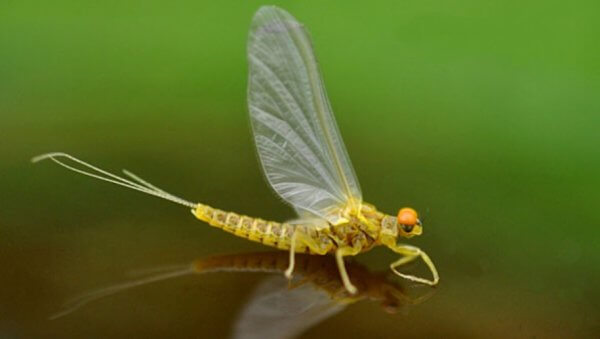
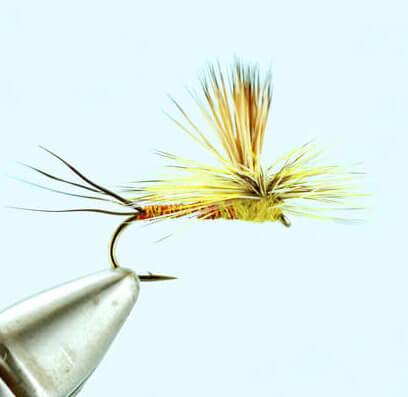
It gets better. If enough PMD’s are present, the trout will focus on different phases of the PMD life cycle. Click here for more info on mayfly life cycles. There are emerging mayflies (nymphs coming through the meniscus [surface film] to become adults), crippled mayflies (nymphs or adults that have not successfully completed the life cycle) and spinners (adult mayflies returning to the water to die) all on the water at the same time. With enough of any of these subsets present on the surface, like a cripple, the trout might move to cripples exclusively, spurning all other 12mm pale olive imitations and naturals that aren’t cripples!
The Mechanics of Focused Dry Fly Fishing
Choose your fly, and tie it to a balanced leader. If possible, position yourself downstream of the rising fish. You’re in the trout’s blind spot downstream, and less visible. Get as close as you can to the target, and cast. Watch for drag. Mend if possible. If you make a bad cast, let it float through.
These fish are stationary. If you can’t find a good drift from where you are, move your feet. Remember, directly upstream is easier than directly across, but get to a spot where you can make a cast. Watch the fly, and the entire fly line. Watch where the current is negatively impacting the fly line, defined as speeding it up or slowing it down. Move your feet or mend the line to negate the effects of the current. Sometimes less than 2 steps can be the difference in drag or drag free.
Make sure you have the right fly. If you’ve found the spot, and gotten some good drifts to no avail, switch bugs. Show the trout something different. If there are enough trout rising, throw the same fly at a different trout. Again, analyze drift and cast for places to improve. Each are viable strategies. Listen to the trout. They’re up and eating. If you’re not catching fish, YOU need to change your behavior. It’s a sure bet the trout won’t.

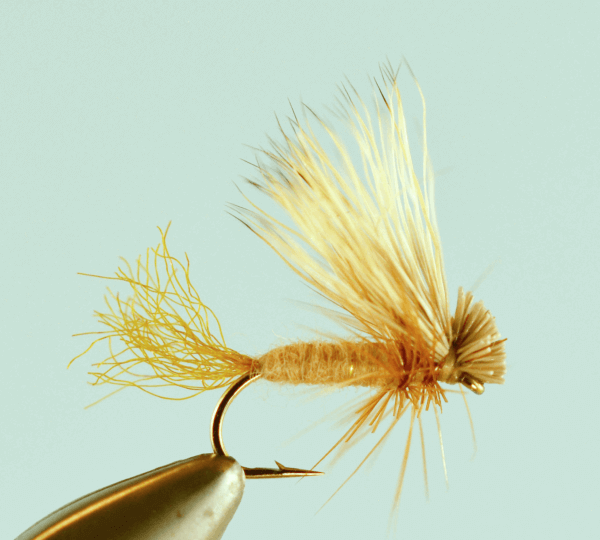
It can get a little intense in a big hatch situation. The fish are rising, and you’re not catching them. And the same question rears its ugly head. Is it the fly or the presentation. Is the trout not eating because you’ve chosen the wrong stage or is the fly dragging. And you’re trying to figure this out on a time budget- the trout won’t rise all day. You’re trying to figure this out in the excitement, frustration and exhilaration of rising fish everywhere.
This is not the place to get into the subtleties of tactics (technical dry fly) or how to adjust your leader to help alleviate drag. We’re going to stay a bit more fundamental.
Focused trout are stationed near the surface to feed. The calorie calculator model says less energy expended, so focused trout are not coming up and sinking down 3 feet between each rise. They’re close to the surface to save energy. Quite often, when you find one fish rising to a hatch, you find a few, if not more. Fish go where the insects are.
You need a strategy for casting at a group of rising fish. A stealthy strategy. In a pod of rising fish, the biggest fish is normally found furthest upstream. Bigger fish get the best place, and first in line means more food. The next biggest fish are just behind, and the fish grow in numbers and shrink in size as the pod extends downstream typically. Depending on light, position, etc. you can sometimes see the fish lined up near the surface and eating.
We know you want to cast to the biggest fish first. Might not be a good idea. There’s a lot of factors that go into that decision, but the main one is how many fish will I spook casting through the pod. The trout are at the surface, and your line landing on top of a trout will often spook it. It bolts off- fear is contagious- and half the pod is gone, usually the larger fish. They didn’t get to be large by ignoring danger.
It doesn’t hurt to start fishing a hatch with the smaller fish out on the pod’s edge. It lets you test the currents and see how the fly is floating. It also lets you figure out what fly might be working. Though in a very dense hatch, two fish 12 inches apart may be eating two different stages of the same insect. It can get tricky. This is why we recommend the shallow and wide fly selection, so you can cover these situations.
We’re going to ask this question. Is this really the place you want to be practicing your knots?! You’ll be changing flies and adjusting your leader. If it takes 10 minutes instead of two to make changes, you’ll be less apt to make the fly and leader changes to make you successful. Know your knots BEFORE you meet the hatch.
Back to dry fly fishing. The size of the insect will dictate how accurately you must cast. If the hatch is large, like a Green Drake or Hecuba, the trout may range 8 inches from left to right to take a fly. But if the insect is small, like a Blue Winged Olive or a Trico, the fish may range no more than 2 inches left to right. That means your cast must be in the feeding lane, drag free and in the trout’s window. Click here to learn about the trout’s window.
One reason the dry fly guys get snobby!
It looks easy to a novice- a bunch of fish rising. Rings on the water, showing where the fish are. Should be a walk in the park with a piece of cake compared to other types of fly fishing. Maybe, maybe not. That ring which so clearly shows where the fish is? It actually shows where the fish ate. To save energy when rising, a trout shifts its pectoral fins and uses the current to push it up and backwards to intersect with the fly. After rising, the trout flicks its tail, moving down and forward to its original position. Minimal energy expended. If you drop your fly in the middle of the ring, you’re actually throwing the fly into the only blind spot the trout has- above and behind it.
You must lead the fish with your cast. The fish is waiting for the current to bring food. Your fly has to enter the trout’s window naturally, following the current, allowing the trout to spot it and decide to rise. Lead too far, and you risk drag. Don’t lead enough, and the trout won’t see the bug.
With a lot of fish rising in a pod, many anglers think just throw it out there- something will eat your fly. Sometimes yes, but mostly no. Choose a specific rise, lead that fish, and catch that fish. Chucking and chancing is rarely successful when confronting a pod of rising fish. With chuck and chance, it’s blind luck if you hit a feeding lane, topped off with a good chance of spooking fish.
If you do make a poor cast, DON”T rip it off the water to try again immediately. Ripping the line over fish close to the surface will very likely spook them. Let the cast float out to where picking it up won’t spook the fish, and try again. The cast will drag, but that is less invasive than tearing it off the surface. Plus, you may be surprised and get a take. Ya never know! How do you know when to let a cast float out? Just like mastering other types of fly fishing, the answer is time on the water.
There’s a very important specialty tackle item dry fly anglers should carry, and that’s floatant. Floatant is a waterproofing gel or liquid used BEFORE the first cast. Get it on the fly when dry, and it keeps the dry fly from immediately absorbing water and sinking. Many anglers also carry a dessicant style floatant. This is a dust/powder that you put your fly in after it gets waterlogged. (an application of floatant doesn’t last forever) The dessicant pulls water out, adds new floatant, and rejuvenates your waterlogged fly.
We’ll end our section on dry flies this way. If you’re a results-oriented angler, you may find yourself fishing the dry about 10% of the time compared to other types of fly fishing. You’re going to reach out to the fish where they are, playing the odds. If you decide to fish dries, be prepared for a lower fish count and often smaller fish. You’re out there for the visceral thrill of seeing the fish come and eat your fly. Both are valid, both are fun and both get you onto the water.
Streamer Fishing
Big fish eat little fish. That’s what streamers are all about.

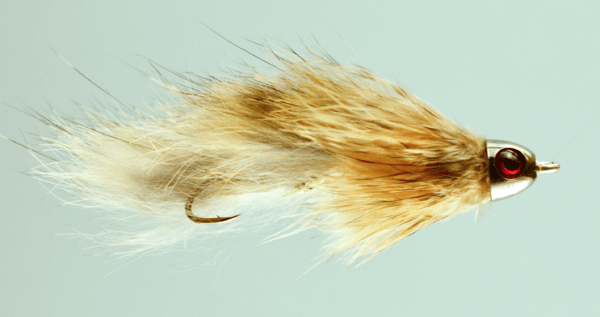
Streamer fishing is the easiest out of all types of fly fishing. A streamer imitates a minnow or a leech, animals that can swim in the river. No more drag free drift!! Just chuck your streamer into some likely water and pull it back to you, just like a lure. Everything happens on a tight line- when the fish eats you feel it hit the fly/lure. What could be easier!
Streamer fishing can be the hardest fly fishing there is. You’re using a big fly that’s easily distinguished from a natural minnow. You’re targeting the largest fish in the river, and they don’t get big by being stupid. Your casting needs to be super accurate with a large fly, not easy. Using a streamer, you’ve removed 75% of the trout population from eating your offering. Unlike a lure, you need to impart an irresistible action to your streamer so the fish eat it. Streamer fishing is actually really difficult!
Most of the time, trout will be three times the size of its prey before they go for the kill. Not much sense in attacking something that can attack back. Use a 3 inch fly, and the smallest trout you catch is 9 inches, and that’s rare. Most trout eating streamers are 14 inches and larger. Hoo Hoo! Big fish!
If you’ve spent time with the other types of fly fishing(nymphs and dries) you quickly find out the bread and butter is in 8-12 inch fish. While these don’t make it to Instagram, that’s the average size fish most people catch. We know, that wasn’t in the brochure!
Streamers catch big fish. But when you’re hunting big trout, you have to pass by the little ones. It’s the nature of streamer fishing. Be ready for dry spells when you start throwing the big bugs.
Streamers also teach you about structure. Trout love structure! Boulders, root wads, overhanging tree branches- trout gravitate to places that provide current breaks and protection from overhead predation. Click here for more information on structure and reading the water. Streamer fishers quickly learn another critical aspect of structure.
Structure will take your fly and not give it back. You throw your fly into a root wad, you feel the fly stop its swing, and you set the hook! Driving the point into a ½ inch branch that breaks your 10lb test like it was 6X. New fly time. Big fish live in places that are hard to access. It’s how they stay big. When you start running a streamer, be ready to lose a few flies.
Casting is important when it comes to streamer fishing, far more important than the other types of fly fishing. When fishing a drag free drift, once you cast beyond your mending ability, your cast has limited effectiveness. Not so with streamer fishing. The further you cast, the more fish get a chance to see your fly. It’s a numbers game. Remember what we said about structure? Distance AND accuracy.
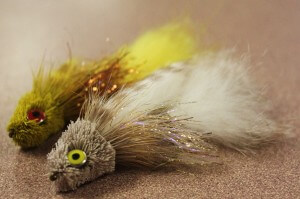
The Mechanics of Streamer Fishing
Locate a probable lie for a trout. Position yourself upstream from the lie, and cast downstream, above and further than the lie. Point the rod tip at the fly- it may actually be 6 inches under water. Follow the path of the fly with the rod tip. The current will carry the fly further downstream to the lie, as well as pull the line, bringing the fly across the current. With practice, you find how far above and how far beyond you should throw the fly to intersect with the trout’s lie.
While the fly is intersecting the lie, you are manipulating the fly with the left hand (for right handed casters. Lefty’s, translate as you’ve always done). The line is tucked under 1-4 fingers of the right hand, and all manipulation takes place BEHIND the right hand. You will find what’s comfortable for the right hand.
Classic streamer fishing says stand at a 45 degree angle to the lie. We feel that’s the steepest angle of approach that should be used. You should not be below the lie casting upstream, but anywhere from casting directly across from the lie to downstream at 45 degrees is acceptable. Different angles will change fly speed and path. Fish out your cast, take a step downstream, and repeat the process. Moving downstream at a little pace allows more fish to see your fly.
Most streamers have very limited “action”. Lures have all sorts of built in action- swiveling blades, wiggle bibs, buzzing blades and the like. All that action calls to fish. Other than soft construction materials that undulate in the water, streamers have no mechanical means to create action. All the fish calling action of a streamer comes from you.
You need to understand the mind of a predator. Predators look for weak, sick and injured prey. Why use energy chasing healthy food when you can wait for something injured to come along. We’ve all seen fish struggling to remain alive, either in an aquarium or the wild. Their movements are erratic compared to a healthy specimen. Predators are called by erratic movement.
This means you should move your streamer erratically as it travels through the water. The best advice we can give you is to “channel” a dying fish, and mimic that action. The left hand may make two short strips then stop. Rest. One tug. Rest longer. 3 quick jerks. You get the picture. A steady tug-tug-tug-tug sends a signal of health. You want to send the opposite. Think erratically.
Another strategy for streamer manipulation is the ascending speed strategy, or listen to the trout. When starting your way down a pool, cast and just let the fly swing across with no manipulation. If you get no takes after 2-4 casts, change the action. Switch to long, slow tugs on the line. No action, switch to faster, shorter tugs. No action, switch to faster, longer tugs. You see the pattern. By the time you hit the bottom of the pool, you should be stripping as fast as you can with the left hand and pushing the rod forward towards the fly, moving your streamer as fast as you can. You are allowing the trout to tell you how they want the fly presented to them. If you only use one retrieve, and it’s not working, switch it up till you find the retrieve that does work.
Click here for even more streamer tips!
There is a time when you cast your streamer upstream from your position in the water. We learned in nymphing that casting upstream and floating down with the current allows the nymph time to sink to the proper depth for fishing. The same applies to streamers. Cast your streamer upstream, and mend to remove tension. Your streamer will sink. Follow the fly with the tip of the rod, and when it hits the right spot (which you are in charge of finding) start to manipulate the fly as outlined above. Now, when you’re moving the fly, it’s at a different level in the water column. That may also change your success rate. Your streamer is closer to the bottom, with all the positives that follow that positioning- more fish near the bottom, they feel safer there and they have to move less to eat your fly.
Like the other types of fly fishing there are many factors in play when choosing streamers. The first, surprisingly, is line weight. We sell weighted streamers 6 inches long, which are big and heavy to throw. If you have a lighter rod like a 4 or 5 weight, that big streamer is going to be very difficult to cast far and accurately. That streamer is better thrown on a 7 or 8 weight rod. The first criteria for choosing streamers is can I cast that thing.
The next concept is shape and color. When confronted with the color conundrum, we fall back on this adage. Bright day- bright fly, dark day- dark fly, light day- light fly. So have some light, dark and bright flies in your kit. Other anglers use a progressive method of fly choice. On the water, they will start with the lightest fly in the box, often white. They will fish a white fly until it gets eaten or they lose confidence, and then go to a darker fly, maybe tan. They will progress from their lightest fly to their darkest fly, again allowing the trout to tell the angler what they’re eating that day. And yes, as they change fly color, they are also changing retrieve and depth with each color as outlined above.
Minnows come in all shapes and sizes. Wide and chubby sculpins, sleek skinny minnies, prey fish have many shapes. When buying streamers, it pays to have some bulky streamers and some skinny ones as well. Change shape along with all the other changes you’re making.
No one said streamer fishing wasn’t a lot of work! The reward is in fish size.
Streamer fishing is the most invasive out of all the other types of fly fishing. A dry fly daintily floats on the surface, causing almost no disturbance on the water. Nymphing brings the fly down a bit deeper, and the indicator may land with a bit of a plop, but again, it’s a dead drift tactic and not too invasive. Streamer fishing is invasive. Crash the cast as far as you can, rip the fly through the water, take 1-3 steps downstream and do it again so every fish gets a chance to eat. Streamers are noticed by every trout in the pool, and those responding positively will be far outnumbered by others running for cover as this thing goes careening past.
This leads an angler to two conclusions. If you get to a spot and plan to fish it for a while with dries, nymphs and streamers, DON’T start with the streamer! You’re going to rile up the pool, alert every fish to your presence and make dries and nymphs a much trickier proposition. In a perfect world, start with the dry, progress to the nymph, and as you leave, rip the streamer. You can flip flop dries and nymphs, but try and leave streamers till the end. Of course, if you’ve decided to only fish streamers, no matter what, this point is moot.
The other erroneous conclusion that some novice anglers form is streamers don’t work. Following the above strategy, the streamer is the last option. If Mr. Trout has stepped on a nail and contracted lockjaw, it may be very few fish were caught, and none on streamers. Since the streamer is the last of the types of fly fishing used and it didn’t work, it’s freshest in memory. Streamers don’t work. Also, you may choose an area that has great dry and nymph fishing, but poor streamer fishing. It’s rare that water has great nymphing, dry and streamer fishing- the habitat requirements are seldom all found together.
While streamer fishing is easy because it’s done on a tight line, it’s also really difficult due to fly size and your ability to activate the fly that entices the trout. Once a drag free drift has been achieved with a nymph or dry, you have a good chance a fish will eat, especially with a nymph. Drag free is ALWAYS the correct action.
Streamers don’t have that certitude. The correct action and color varies from day to day, and sometimes throughout the day. You’re constantly adjusting the fly’s action when streamer fishing, constantly experimenting. We’ve said it before, listen to the trout. They will tell you what they want.
Nymphs and dry flies require a much less aggressive approach to eating than streamers. Streamers take a much stronger act of will by the trout. A trout only has to bank its pelvic fins to eat a nymph or dry- chasing a minnow requires a much greater energy expenditure. Not all fish large enough to take a streamer are constantly active. Large fish get large by conserving energy. When you run into lockjaw, it’s the big fish that get it first!
If you decide to get serious about streamers, and many do, there’s lots of specialist tackle to be more effective. We know trout like to be close to the bottom. It makes sense for your streamer to be there as well. Full sinking lines, and floating lines with sinking tips are available to take your streamer deeper. The classic 5-6 weight isn’t always heavy enough to handle big streamers, so many anglers have a dedicated 7-8 weight rod with various sinking and floating lines. The big rods make casting large flies simpler, and can be useful when fighting bigger fish.
Big rods are also useful when streamer fishing is best, which is before and after run-off. Our Montana’s freestone rivers are fed by mountain snow melt, which normally starts entering in late April and continues through early June. During run-off, the water is high and brown, and difficult to fish. Prior and post run-off, as rivers fluctuate in volume, minnows are buffeted about in the current. Big fish feed on these disoriented minnows, and streamers are extremely effective at these times. Unlike insects, which are cyclical, minnows are available 365 days a year. There is never a wrong time to fish streamers, but there are definitely times when they are more effective. Talk to your fly shop, they’ll know what’s going on.
This is just the tip of the iceberg on dry flies, streamers and nymphs. You can read the Mangler blogs that really get into the weeds on these subjects, and find out a lot more about techniques, flies and tackle. We love to be able to help people start on the amazing journey that is fly fishing.
But remember this. You can read about knitting or playing shortstop all day long, but when the needles are in hand, or glove on between second and third, you’re NOT MUCH BETTER OFF than the last time you practiced. Fly fishing, like any other activity, is a hand skill, and the more you DO it, the better you’re going to get. It’s one thing to understand how, it’s a bigger thing to actually be able to put that knowledge into practice. Knowledge is power- TIME ON THE WATER is more powerful.
In short- GO FISHING!


